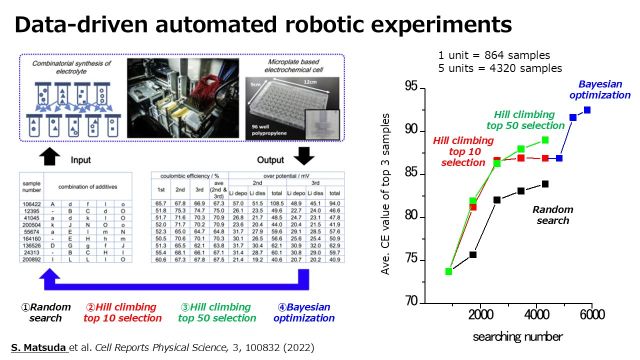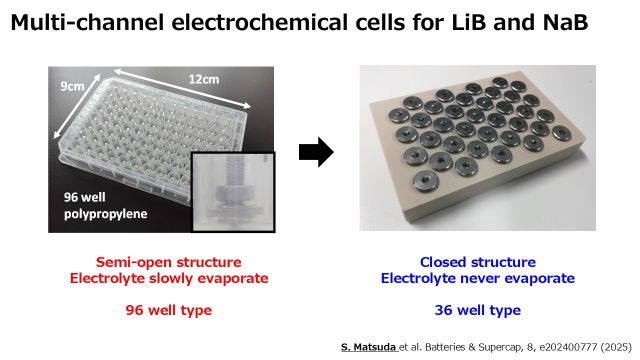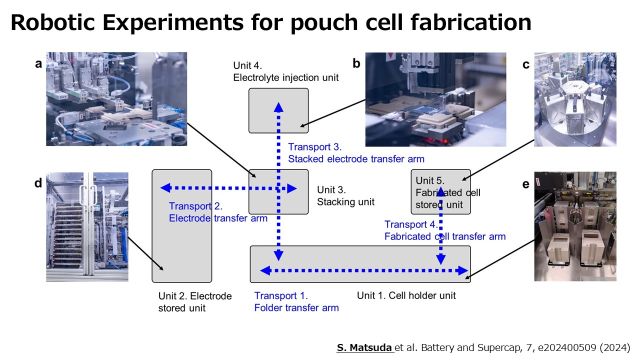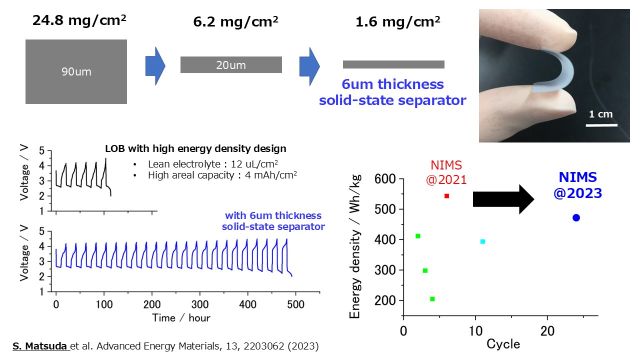Automated Electrochemical Experiments Team
Members
Shoichi MATSUDA
SAMURAI
Team Leader, Automated Electrochemical Experiments Team, Battery and Cell Materials Field, Research Center for Energy and Environmental Materials (GREEN)

Arghya DUTTA
SAMURAI
NIMS Special Researcher, Automated Electrochemical Experiments Team, Battery and Cell Materials Field, Research Center for Energy and Environmental Materials (GREEN)

Yanan GAO
SAMURAI
NIMS Postdoctoral Researcher, Automated Electrochemical Experiments Team, Battery and Cell Materials Field, Research Center for Energy and Environmental Materials (GREEN)

Anna MYOJIN
NIMS Engineer, Automated Electrochemical Experiments Team, Battery and Cell Materials Field, Research Center for Energy and Environmental Materials (GREEN)

Emiko MIZUKI
NIMS Engineer, Automated Electrochemical Experiments Team, Battery and Cell Materials Field, Research Center for Energy and Environmental Materials (GREEN)

Takashi KAMEDA
NIMS Engineer, Automated Electrochemical Experiments Team, Battery and Cell Materials Field, Research Center for Energy and Environmental Materials (GREEN)

Minako NISHIOKA
NIMS Engineer, Automated Electrochemical Experiments Team, Battery and Cell Materials Field, Research Center for Energy and Environmental Materials (GREEN)

Taiga OZAWA
NIMS Engineer, Automated Electrochemical Experiments Team, Battery and Cell Materials Field, Research Center for Energy and Environmental Materials (GREEN)

Motivation and Outline
The Electrochemical Automated Experiment Team actively utilizes robotic experimental techniques to achieve high-throughput experimentation across various processes, enabling the rapid acquisition of large-scale experimental data. By applying data science methodologies to the collected experimental datasets, the team conducts research with the primary goal of accelerating the discovery of innovative electrochemical materials.
Facilities

Research Results
Exploration of Electrolytes for Lithium-Air Batteries Using Automated Experimental Robots and Data Science Techniques
A high-throughput evaluation system for electrolyte additives was established using a microplate-type electrochemical cell. By applying machine learning methods such as Bayesian optimization, we successfully discovered synergistic additive combinations that improve the cycle life of lithium-air batteries.

Development of a Sealed Parallel Electrochemical Cell for Combinatorial Electrolyte Screening
A sealed parallel electrochemical cell suitable for lithium-ion and sodium-ion batteries was developed. Its applicability for performance evaluation of lithium-ion batteries under high-temperature conditions was successfully demonstrated.

Development of an Automated Robotic System for Stacked Battery Cell Fabrication
An automated experimental robot system was built within a dry room, equipped with mechanisms for the precise stacking of anode, separator, and cathode layers, as well as electrolyte injections. Applying this system to lithium-air batteries proved effective for acquiring highly reproducible charge-discharge data and for developing electrolytes focused on the synergistic effects of additives.

Elucidation of Crossover Reactions Between Electrodes in High-Energy-Density Lithium-Air Batteries
By applying advanced analytical techniques, the degradation mechanisms of high-energy-density lithium-air batteries were investigated in detail. It was revealed that water and carbon dioxide generated at the cathode cross over to the anode and irreversibly react with the lithium metal electrode, which constitutes a major bottleneck for battery lifespan. Introducing a lightweight protective film successfully enhanced the cycle life of lithium-air batteries.




